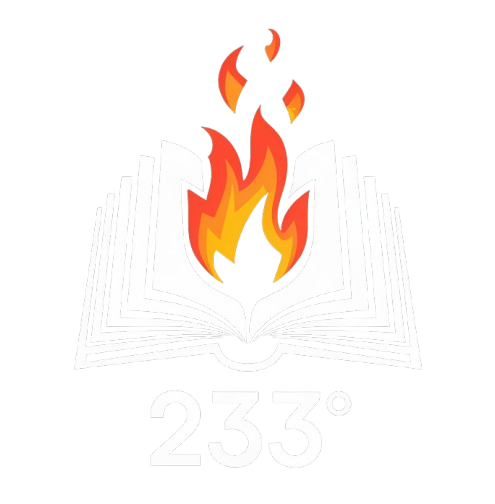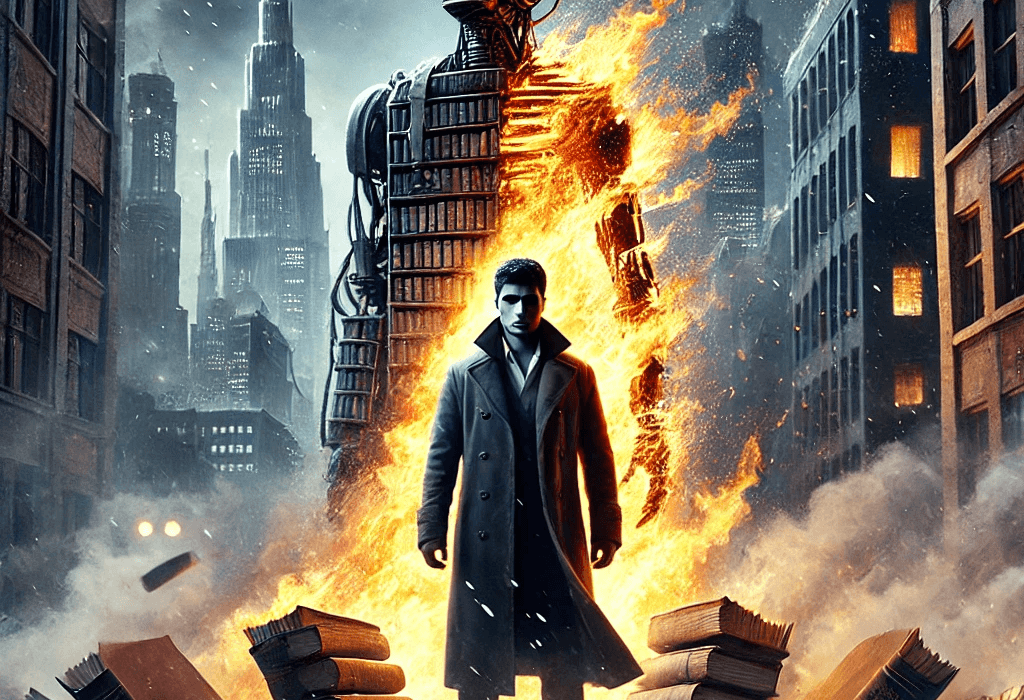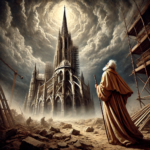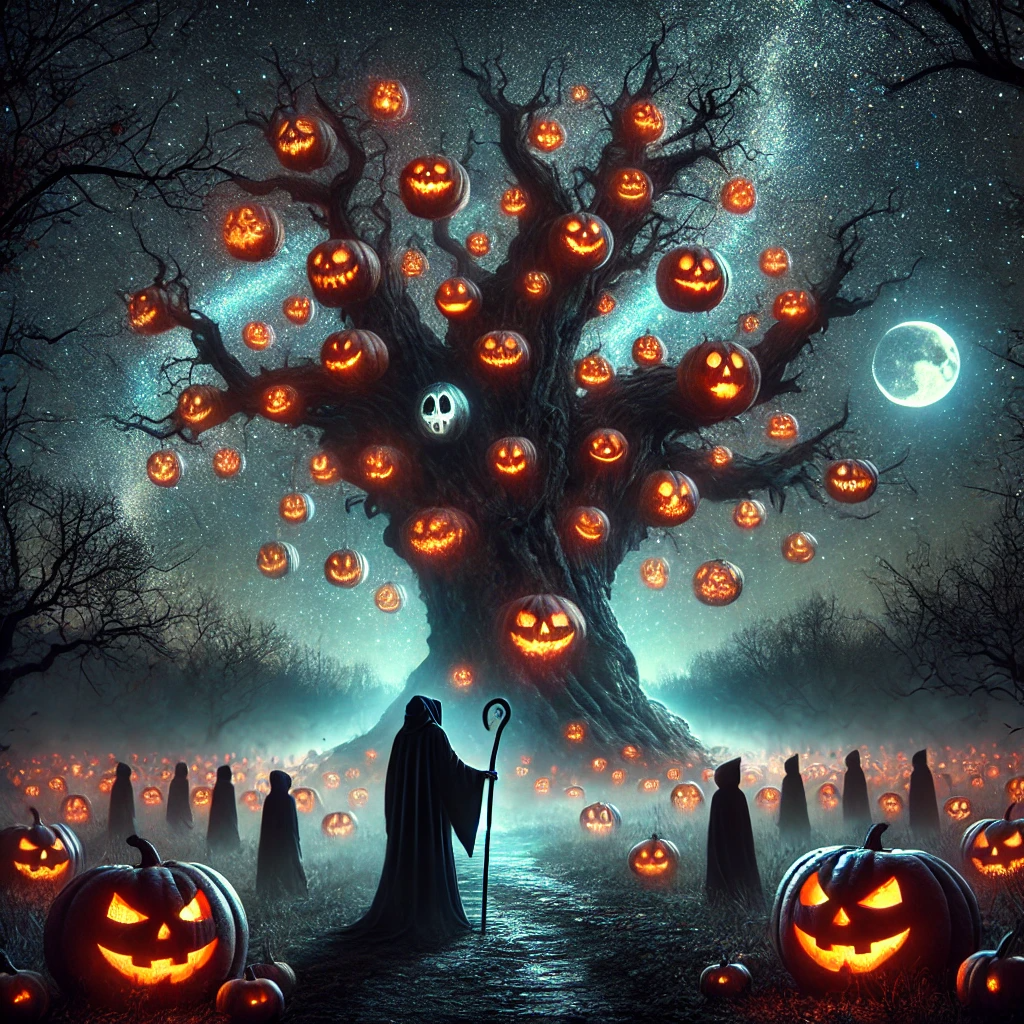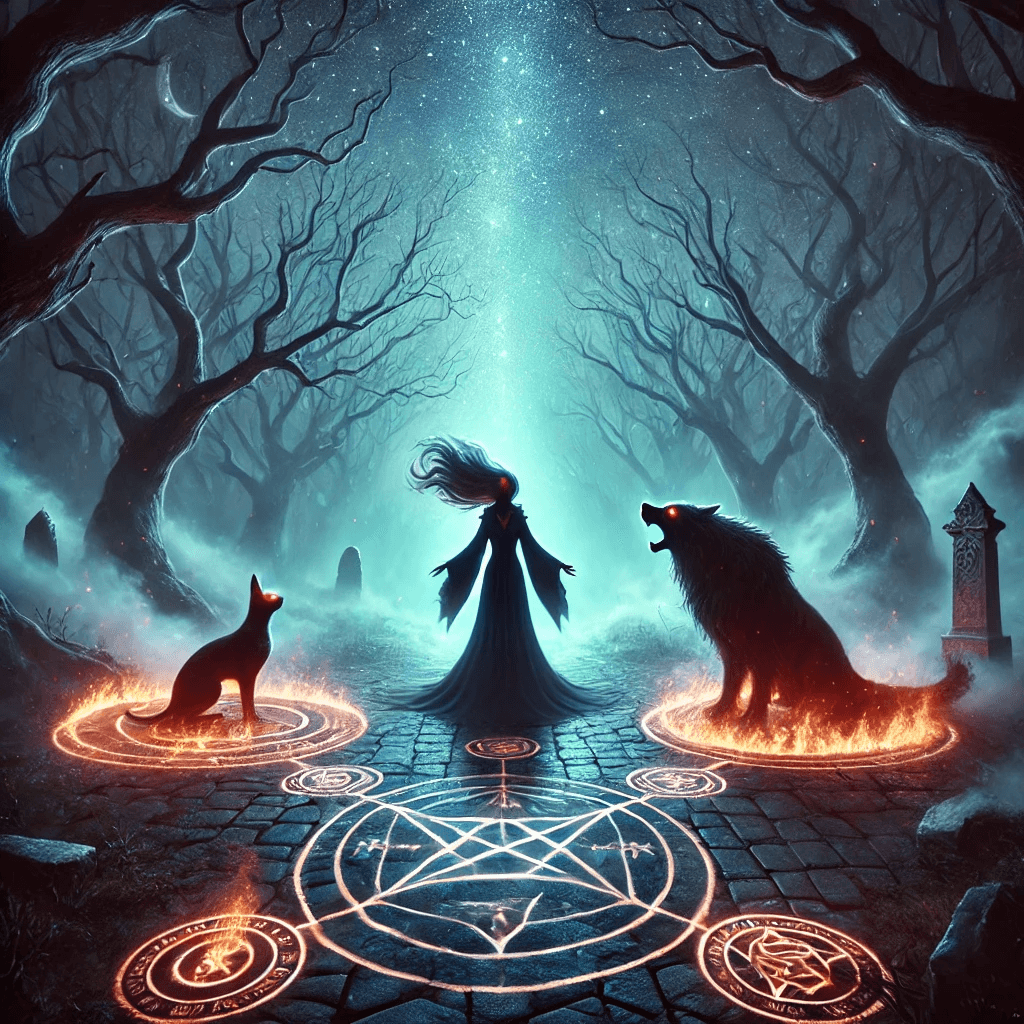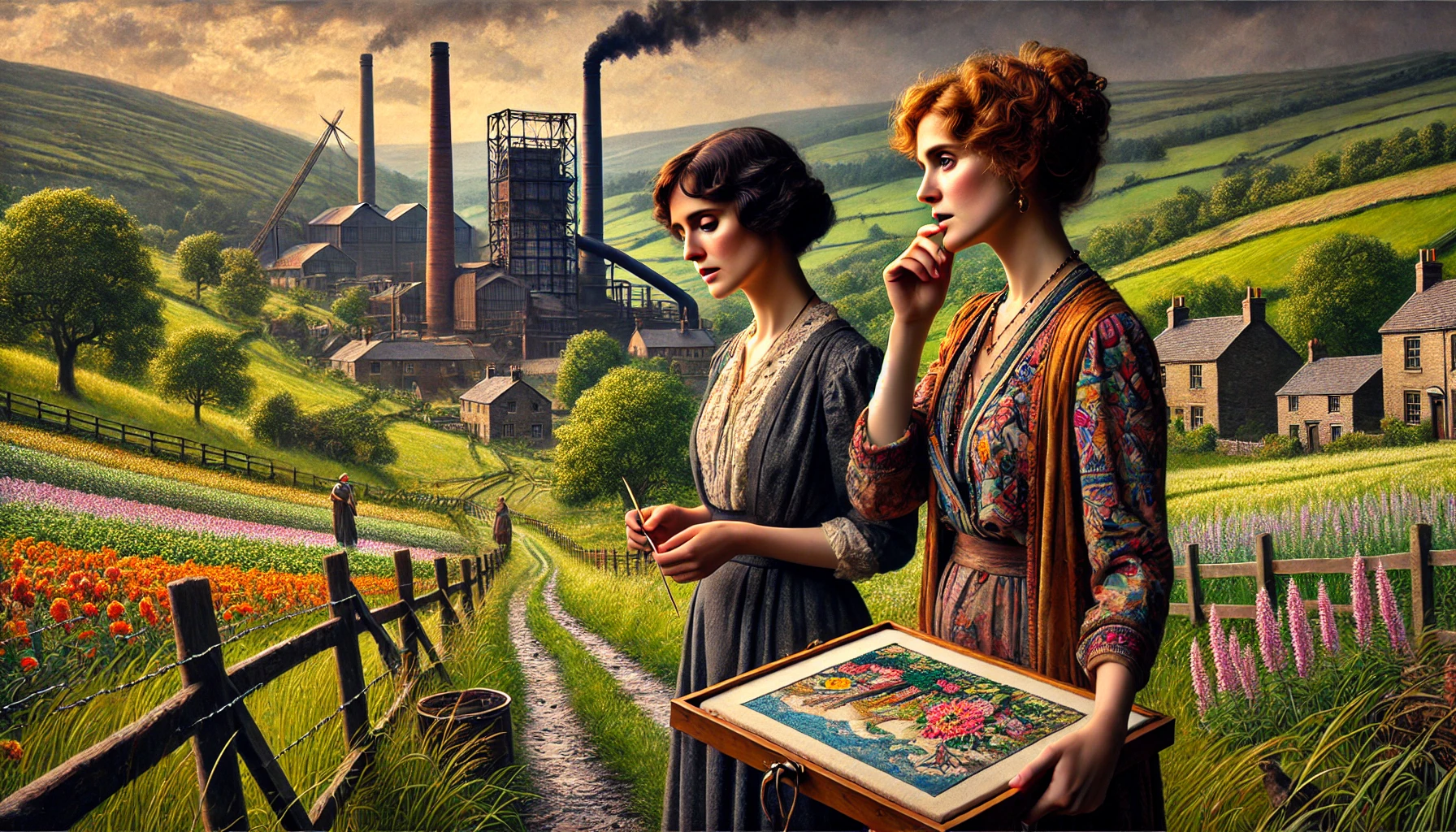Ray Bradbury’s Fahrenheit 451, published in 1953, is a dystopian novel exploring themes of censorship, conformity, and the power of knowledge. Set in a future where books are banned and “firemen” burn them, the story follows Guy Montag, a fireman who begins to question his society’s oppressive norms and seeks enlightenment through forbidden books.
Plot Summary
In a world illuminated by artificial lights and haunted by flickering screens, Guy Montag walked the midnight streets, a fireman in a city that revered destruction over creation. Fire was his craft, and books, his fuel. Each day, Montag donned his soot-colored uniform, marked with the emblem of the salamander, to ignite forbidden words and cleanse the world of their presence. It was a duty performed without question until one night when a chance encounter with a strange and luminous girl cracked open his neatly ordered life.
Clarisse McClellan was unlike anyone Montag had ever met. Her voice, soft as the autumn wind, carried questions that pierced the veil of his routine. She was seventeen and brimming with wonder, speaking of dew, stars, and the faint perfume of the world often ignored. Clarisse’s words lingered long after their meeting, challenging Montag to examine the contours of his happiness and the void he had never acknowledged.
Montag returned home to a wife, Mildred, who existed more as a shadow than a partner. Immersed in the glowing walls of her parlor and the incessant hum of her Seashell ear radios, she drifted in a world detached from reality. When Montag discovered that she had attempted an overdose of sleeping pills, his sense of unease deepened, though the swift and mechanical intervention of impersonal medical technicians made it seem almost routine. Still, the sight of her vacant eyes the next morning and her insistence that nothing had happened filled him with a nameless dread.
In the days that followed, Clarisse became a constant presence in Montag’s life, her observations about the world and her simple joy in living striking a discordant note against the monotony of his existence. But one day, she vanished. Her absence, unexplained and unacknowledged by those around him, left a chasm that Montag could not ignore.
The next alarm called Montag and his crew to a home unlike any he had encountered before. The old woman who lived there refused to flee, clutching her books as if they were lifelines. As Montag watched the flames consume the carefully bound pages, he was struck by an inexplicable urge. His hand, moving almost of its own accord, snatched a book from the blaze and concealed it beneath his jacket. The old woman, rather than surrender to the firemen, chose to perish among her books, lighting the match herself as they retreated to the safety of the street.
Back at the firehouse, Montag could not shake the memory of the woman’s defiance or the forbidden object now hidden in his home. Questions swirled in his mind, and his once unshakable confidence in his profession began to waver. When he finally confronted Captain Beatty, the firehouse chief, his doubts spilled forth in halting words. Beatty, a man as steeped in literature as he was in the destruction of it, spoke with the certainty of a zealot. He painted a portrait of a world where books bred dissent and unhappiness, where conformity was the balm for humanity’s fractured soul. Yet his words only deepened Montag’s turmoil.
Montag turned to Faber, a retired English professor he had met years before. Faber, a cautious man, initially hesitated to engage with Montag’s growing rebellion, but eventually, the two forged a fragile alliance. Faber provided Montag with a device to communicate and guide him, urging him to subvert the oppressive system from within. Their plan was audacious: to plant books in the homes of firemen and dismantle the system of censorship by exposing its hypocrisy.
Montag’s rebellion, however, could not remain hidden. Mildred, unable to comprehend her husband’s transformation, betrayed him. The firemen arrived at Montag’s home, and Beatty ordered him to burn it down himself. As the house crumbled under the onslaught of flames, Montag felt a clarity that had eluded him until then. When Beatty taunted him, pushing him to the brink, Montag turned the flame thrower on his former mentor, silencing him forever.
Now a fugitive, Montag fled into the night with the Mechanical Hound close behind. The hound, an unrelenting instrument of the state, pursued him through the streets, its needle poised to deliver a lethal dose. Montag barely escaped, crossing the river into the wilderness beyond the city.
In the quiet of the natural world, Montag found a group of exiles, men and women who had committed entire books to memory in hopes of preserving their knowledge for a future beyond tyranny. Among them, Montag discovered a sense of purpose. He became a vessel for the words he had once destroyed, vowing to protect the fragile embers of human knowledge.
As the city behind them erupted in a cataclysm of war, Montag and his companions looked to the horizon. The destruction, both horrifying and cleansing, offered a chance for renewal. Together, they walked into the unknown, bearing the stories of the past and the hope of building a world where fire could warm rather than consume.
Main Characters
- Guy Montag: A fireman by profession, Montag starts as a loyal enforcer of book burning but transforms into a seeker of truth and knowledge. His journey is marked by inner turmoil, curiosity, and rebellion against societal conformity.
- Clarisse McClellan: A young, free-spirited neighbor who challenges Montag’s perspective with her inquisitive nature and love for life’s simple pleasures. She represents individuality and curiosity.
- Mildred Montag: Montag’s wife, deeply engrossed in the shallow entertainments of her society. She symbolizes the apathy and escapism prevalent in their world.
- Captain Beatty: Montag’s superior and a staunch advocate for censorship. Beatty is well-read but uses his knowledge to justify the suppression of books, embodying intellectual hypocrisy.
- Faber: A retired English professor who aids Montag in his rebellion. Faber is a symbol of the suppressed intellectual community.
- The Mechanical Hound: A robotic enforcer used to track and punish dissenters, representing the dehumanization and surveillance in this dystopia.
Theme
- Censorship and Oppression: The government’s ban on books and control of information highlight the dangers of suppressing dissenting ideas and critical thought.
- Conformity vs. Individuality: Through characters like Clarisse and Montag, the novel explores the tension between societal pressure to conform and the human desire for self-expression.
- Knowledge and Ignorance: The story contrasts the enlightenment that books provide with the ignorance fostered by a distracted, unthinking society.
- Technology and Isolation: The omnipresence of mind-numbing entertainment underscores the alienation and superficial connections in Montag’s world.
- Fire as a Dual Symbol: Fire is both a destructive force (book burning) and a symbol of warmth, knowledge, and renewal, reflecting Montag’s transformation.
Writing Style and Tone
Bradbury’s writing is poetic and evocative, blending vivid imagery with a rhythmic, almost lyrical quality. His descriptions often verge on the surreal, painting an oppressive yet mesmerizing picture of the dystopian society. For example, the “Mechanical Hound” is described with a chilling precision that evokes unease.
The tone shifts throughout the novel. Initially, it is detached and unsettling, reflecting Montag’s dispassionate conformity. As Montag awakens to new ideas, the tone becomes introspective and urgent, mirroring his emotional and intellectual struggles. Bradbury’s skillful use of metaphor and symbolism elevates the narrative, making it not just a warning about censorship but a meditation on humanity’s relationship with knowledge and creativity.
We hope this summary has sparked your interest and would appreciate you following Celsius 233 on social media:
There’s a treasure trove of other fascinating book summaries waiting for you. Check out our collection of stories that inspire, thrill, and provoke thought, just like this one by checking out the Book Shelf or the Library
Remember, while our summaries capture the essence, they can never replace the full experience of reading the book. If this summary intrigued you, consider diving into the complete story – buy the book and immerse yourself in the author’s original work.
If you want to request a book summary, click here.
When Saurabh is not working/watching football/reading books/traveling, you can reach him via Twitter/X, LinkedIn, or Threads
Restart reading!

